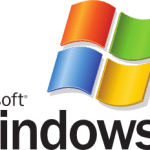Win4Lin Pro Desktop is the flagship product in the Win4Lin family of integrated Windows-on-Linux solutions which enables Linux user to runs Windows 2000/XP applications and desktop as intended in ‘real’ Windows at near-native speed, without the need to patch the host operating system (e.g. no need to patch the Linux kernel), on top of a Linux operating system. Win4Lin Pro Desktop features One-Click-2-Windows installation, copy-on-write-snapshot mode which prevents changes to the user’s virtual system disk from being saved, full support for audio playback and recording, support for AMD and Intel 64-bit hosts, and full integration between the Linux and Windows filesystems for user documents and settings.
Tom’s Hardware explains and defines about what’s the emulation and virtualization techniques in the virtualization technology, and compares the differences between Win4Lin and VMWare where Win4Lin is based on the freely available and popular QEMU platform, which employs user mode emulation to run cross-platform binaries and system mode for total hardware emulation. Meanwhile, VMware uses its own custom emulation framework and employs proprietary techniques to achieve the same goal: provide a subset of operating system functionality within a greater resource context.
Tom’s Hardware then install Win4Lin Pro Desktop on Fedora Core 5 as reference (host) system detailing system requirements and limitations of Win4Lin, plus tips and benchmarking results, and concludes in the review that whether Win4Lin can completely replace a native Windows installation remains to be seen. For low-intensity exercises like Microsoft Office interaction it does pretty well, but propagation delays owing to operating Windows within Linux may be problematic for professional graphics designers. Image editing and manipulation programs like Adobe Photoshop or Jasc Paintshop are resource-intensive and can fully exercise underlying hardware resources even for moderate tasks. That said, either dual-boot configurations or substantial hardware investment will produce the best results for such applications.
Full Review (link dead)




